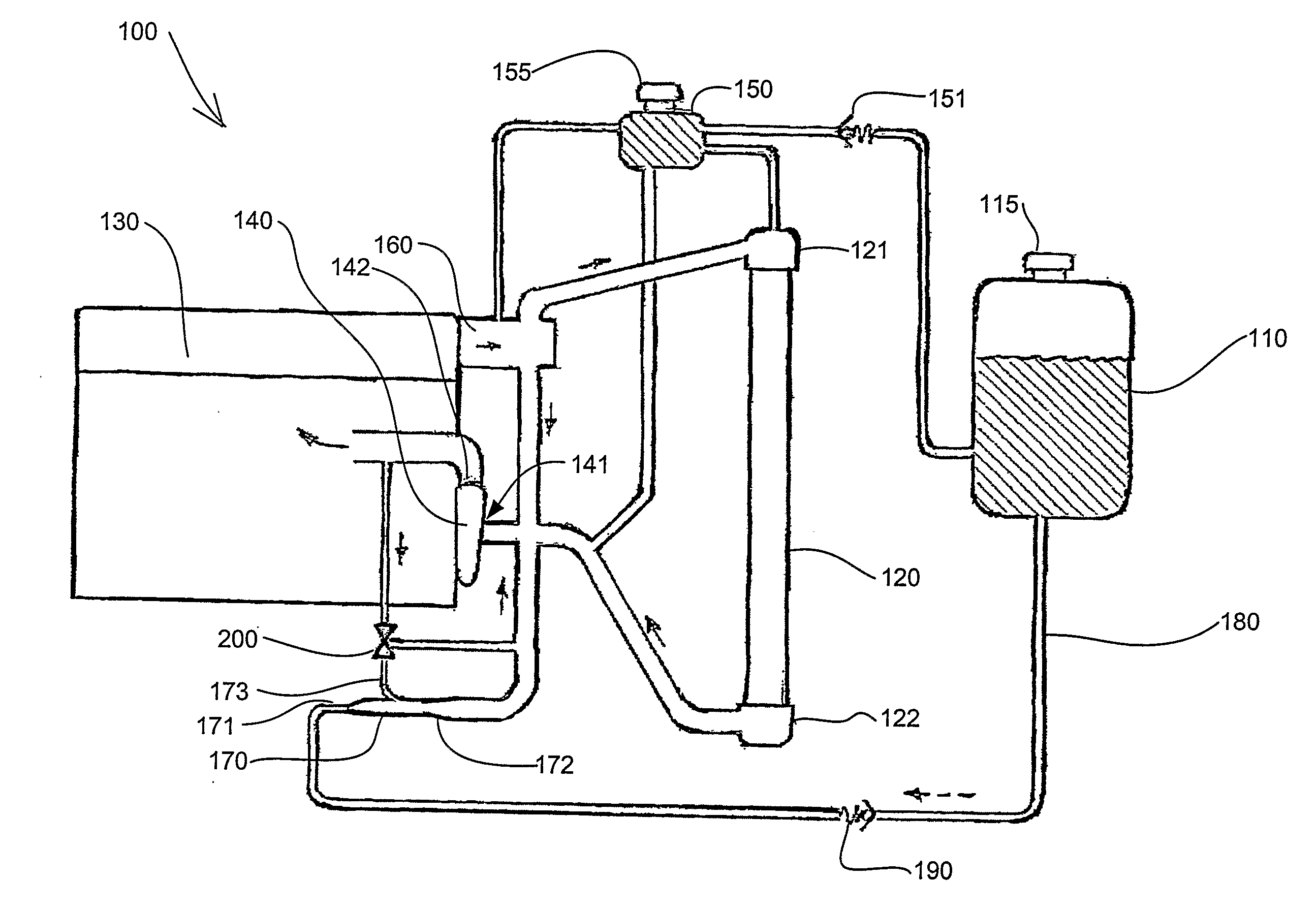Cooling system
a cooling system and cooling system technology, applied in the direction of engine cooling apparatus, machines/engines, mechanical equipment, etc., can solve the problems of increasing the stress level of cooling system components made of plastic materials or rubber, insufficient air cooling to cool the engine, and components that get significantly more expensive, so as to increase the coolant pressure
- Summary
- Abstract
- Description
- Claims
- Application Information
AI Technical Summary
Benefits of technology
Problems solved by technology
Method used
Image
Examples
Embodiment Construction
[0024]In FIG. 1, a cooling system 100 according to the present invention is shown schematically. The cooling system 100 comprises an expansion tank 110, a radiator 120, a cooling system of an engine 130, a coolant pump 140, a deaeration tank 150, a thermostat housing 160 and an ejector pump 170 as well as piping, hosing or ducting connecting these components in a way that will be described below.
[0025]The expansion tank 110 is provided with a coolant outlet hose 180 connecting the expansion tank 110 to an ejector pump inlet 171 of the ejector pump 170. A one-way valve 190 in the hose 180 allows a flow of coolant from the expansion tank 110 to the ejector pump 170, but stops coolant from flowing in the opposite direction.
[0026]An ejector pump outlet 172 of the ejector pump 170 is connected to a coolant inlet 141 of the coolant pump 140. A coolant outlet 142 of the coolant pump is connected to the internal cooling system of the engine 130. Moreover, a power connection 173 of the eject...
PUM
 Login to View More
Login to View More Abstract
Description
Claims
Application Information
 Login to View More
Login to View More - R&D
- Intellectual Property
- Life Sciences
- Materials
- Tech Scout
- Unparalleled Data Quality
- Higher Quality Content
- 60% Fewer Hallucinations
Browse by: Latest US Patents, China's latest patents, Technical Efficacy Thesaurus, Application Domain, Technology Topic, Popular Technical Reports.
© 2025 PatSnap. All rights reserved.Legal|Privacy policy|Modern Slavery Act Transparency Statement|Sitemap|About US| Contact US: help@patsnap.com



